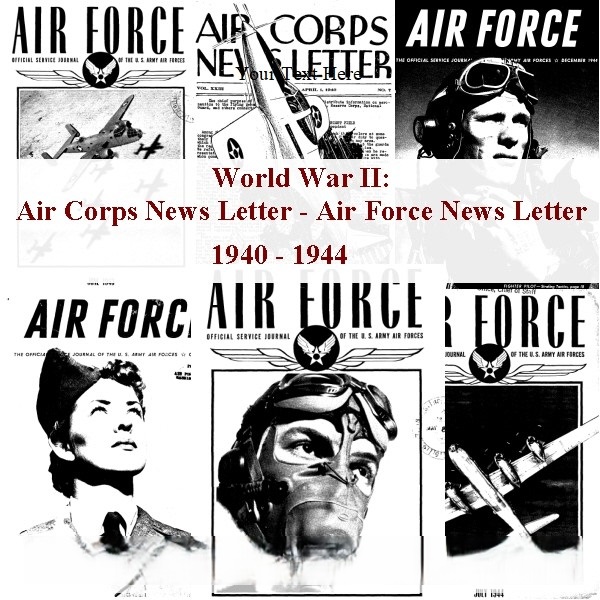
World War II: Air Corps News Letter – Air Force News Letter 1940 – 1944
$19.50
Description
U.S. Army Air Forces Journal: WWII Perspectives
Timeline of Main Events (Based on Source Description):
- 1940 – Early 1942: The journal is published under the name “Air Corps News Letter,” reflecting the organizational structure of the U.S. Army Air Corps.
- Early Months of World War II: The Air Corps undergoes a rapid structural change. The journal chronicles these changes through its articles and reports.
- During World War II: The journal’s name changes to “Air Forces News Letter,” reflecting the evolving structure and terminology of the U.S. Army’s air component.
- Later in World War II: The journal’s name changes again to “Air Force Official Service Journal of the U.S. Army Air Forces,” further reflecting its official role and the established name of the air arm.
- Throughout 1940 – 1944:The journal serves as a primary medium for the exchange of information and ideas among U.S. Army Air Forces personnel.
- It features articles containing first-hand combat knowledge from Air Force personnel.
- Messages from top commanders are regularly included.
- Life-saving tips and practical information on various aspects of air operations (aircraft maintenance, gunnery, navigation, engaging the enemy) are provided.
- A “Roll of Honor” section lists personnel receiving commendations.
- December 1942 – June 1944: A comprehensive index of issues is available.
- December 1943 (Example Content):Articles cover a wide range of topics, including:
- Procedures for AAF personnel returning from overseas.
- First-hand accounts of combat missions (e.g., “Mission to Regensburg”).
- Technical information for specific roles (e.g., “What Navigators Should Know About the Astro-Dome”).
- Reports on technological advancements (e.g., “Developments in Firepower”).
- Operational successes of specific aircraft (e.g., “Our B-26s Win Their Wings over Western Europe”).
- Global operations of support services (e.g., “Operations of Our Air Evacuation Service around the World”).
- Contributions of ground personnel (e.g., “Ground Crews Prove Their Ingenuity on the Combat Line”).
- Logistical challenges (e.g., “Shipping Fighter Planes Overseas, a Story in Pictures”).
- Survival guidance (e.g., “Suggested Procedures for Surviving Emergency Sea Landings”).
- Experiences in newly established theaters of war (e.g., “Life with the First Control Tower Operators on Guadalcanal”).
- Technical details of aircraft equipment (e.g., “How Cockpit Dials Are Illuminated With ‘Black Light'”, “Development of Air Filters, Performance Characteristics”).
- Intelligence on the enemy (e.g., “The Nature of the Enemy We’re Fighting”).
Cast of Characters (Principle People Mentioned):
The description of the source does not explicitly name specific individuals beyond “top commanders” and “Air Force personnel.” Therefore, the cast of characters will be based on the types of individuals who would have contributed to and been featured in the journal:
- Top Commanders of the U.S. Army Air Forces: These would have been high-ranking officers responsible for the strategic direction and overall leadership of the Air Forces during World War II. Their messages would have provided guidance, motivation, and official announcements to personnel.
- Air Force Personnel (various ranks and roles): This is a broad category encompassing all members of the U.S. Army Air Forces, including:
- Pilots: Those flying combat and transport missions, sharing their experiences and tactics.
- Co-Pilots: Second-in-command in multi-crew aircraft, offering their perspectives on missions.
- Navigators: Responsible for guiding aircraft, sharing crucial knowledge for their role.
- Gunners: Operating defensive weaponry on aircraft, providing insights into aerial combat.
- Maintenance Crews: Ground personnel responsible for keeping aircraft operational, showcasing their ingenuity and problem-solving skills.
- Air Evacuation Service Personnel: Medical professionals and support staff involved in transporting and caring for wounded personnel.
- Control Tower Operators: Individuals managing air traffic at airfields, including those in newly established and challenging locations like Guadalcanal.
- Engineers and Technical Specialists: Personnel involved in the development and improvement of aircraft technology, such as firepower, lighting, and air filters.
- Intelligence Officers: Those analyzing and disseminating information about the enemy forces.
- Personnel Receiving Commendations: Individuals recognized for their bravery, skill, or service, listed in the “Roll of Honor.”
Brief Bios (General Descriptions):
- Top Commanders: Highly experienced military leaders responsible for the strategic deployment and operational effectiveness of the U.S. Army Air Forces during a critical period of global conflict.
- Pilots, Co-Pilots, Navigators, Gunners: Aircrew members who directly engaged the enemy in aerial combat and reconnaissance, accumulating invaluable first-hand experience and contributing to the Allied war effort.
- Maintenance Crews: Dedicated ground personnel who worked tirelessly under often challenging conditions to ensure the availability and airworthiness of aircraft, playing a crucial but often unsung role in air operations.
- Air Evacuation Service Personnel: Compassionate and skilled individuals who provided critical medical support and transportation for wounded servicemen, saving countless lives.
- Control Tower Operators: Essential for the safe and efficient operation of airfields, particularly in newly established and contested areas, often working under pressure and in difficult circumstances.
- Engineers and Technical Specialists: Innovative individuals who drove the rapid technological advancements in aviation and related fields, enhancing the capabilities of the U.S. Army Air Forces.
- Intelligence Officers: Analysts and disseminators of crucial information about enemy capabilities, tactics, and intentions, vital for informing strategic and tactical decisions.
- Personnel Receiving Commendations: Individuals from various roles who demonstrated exceptional performance, bravery, or dedication, recognized for their significant contributions to the war effort.
World War II: Air Corps News Letter – Air Force News Letter 1940 – 1944
2,969 pages of Air Forces News Letter, 1940 – 1944, the monthly official service journal of the U.S. Army Air Forces, published by the U.S. Army Air Forces, Air Force Editorial Office. During the war the journal changed its name from Air Corps News Letter to Air Forces News Letter and later changed its name again to Air Force Official Service Journal of the U.S. Army Air Forces.
The journal was described by the Army Air Forces as primarily a medium for the exchange of information and ideas among Army Air Forces personnel. Articles in the journal chronicle the rapid change in structure of the Air Corps during the first few months of World War II.
Regular content in the journal included instruction from Air Force personnel conveying first-hand knowledge gained in combat.
The issues contained messages from top commanders, lifesaving tips, and practical information on aircraft maintenance, gunnery, navigation, and engaging the enemy.
The Roll of Honor section listed personnel and their ranks who received commendations since the previous issue’s list.
Article titles from the December 1943 issue include:
Procedure for AAF Personnel Returned From Overseas
Mission to Regensburg, a Co-Pilot’s Observations
What Navigators Should Know About the Astro-Dome
Developments in Firepower, a Progress Report
Our B-26s Win Their Wings over Western Europe
Operations of Our Air Evacuation Service around the World
Ground Crews Prove Their Ingenuity on the Combat Line
Shipping Fighter Planes Overseas, a Story in Pictures
Suggested Procedures for Surviving Emergency Sea Landings
Life with the First Control Tower Operators on Guadalcanal
How Cockpit Dials Are Illuminated With ‘Black Light’
Development of Air Filters, Performance Characteristics
The Nature of the Enemy We’re Fighting
Includes a comprehensive index of issues December 1942 to June 1944 Inclusive









Related products
-
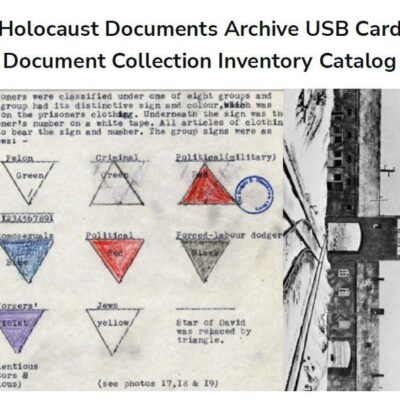
Holocaust Document Archive PDF file – Inventory Catalog of Document Collection
$3.94 Add to Cart -
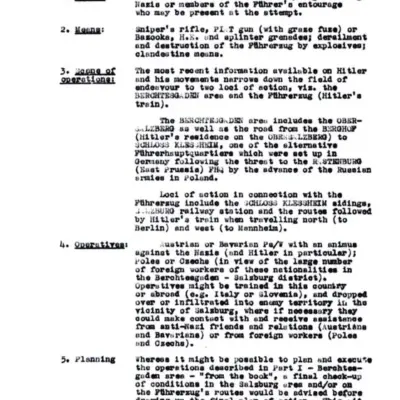
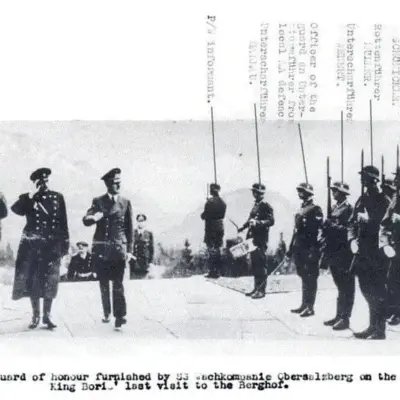
World War II: Adolf Hitler and Operation Foxley – British Assassination Plot
$19.50 Add to Cart -
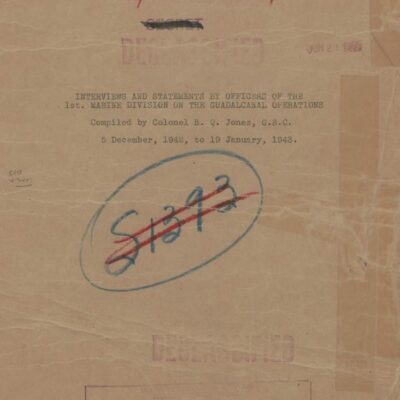
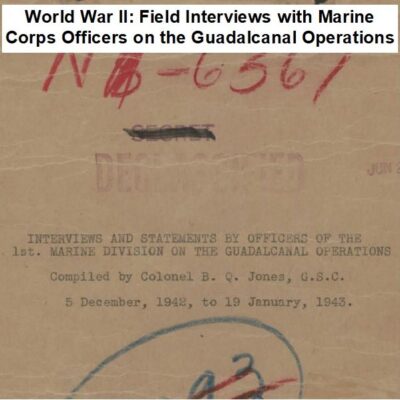
World War II: Marine Corps Officer Interviews on Guadalcanal Operations
$3.94 Add to Cart -
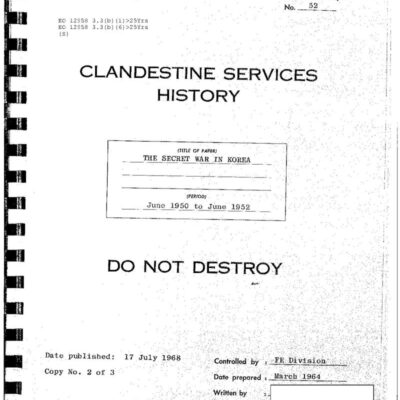
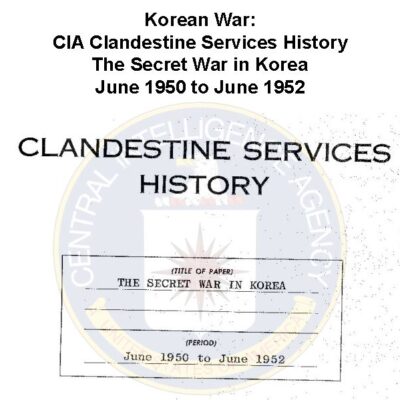
Korean War: CIA Covert Operations History – The Secret Conflict in Korea
$3.94 Add to Cart